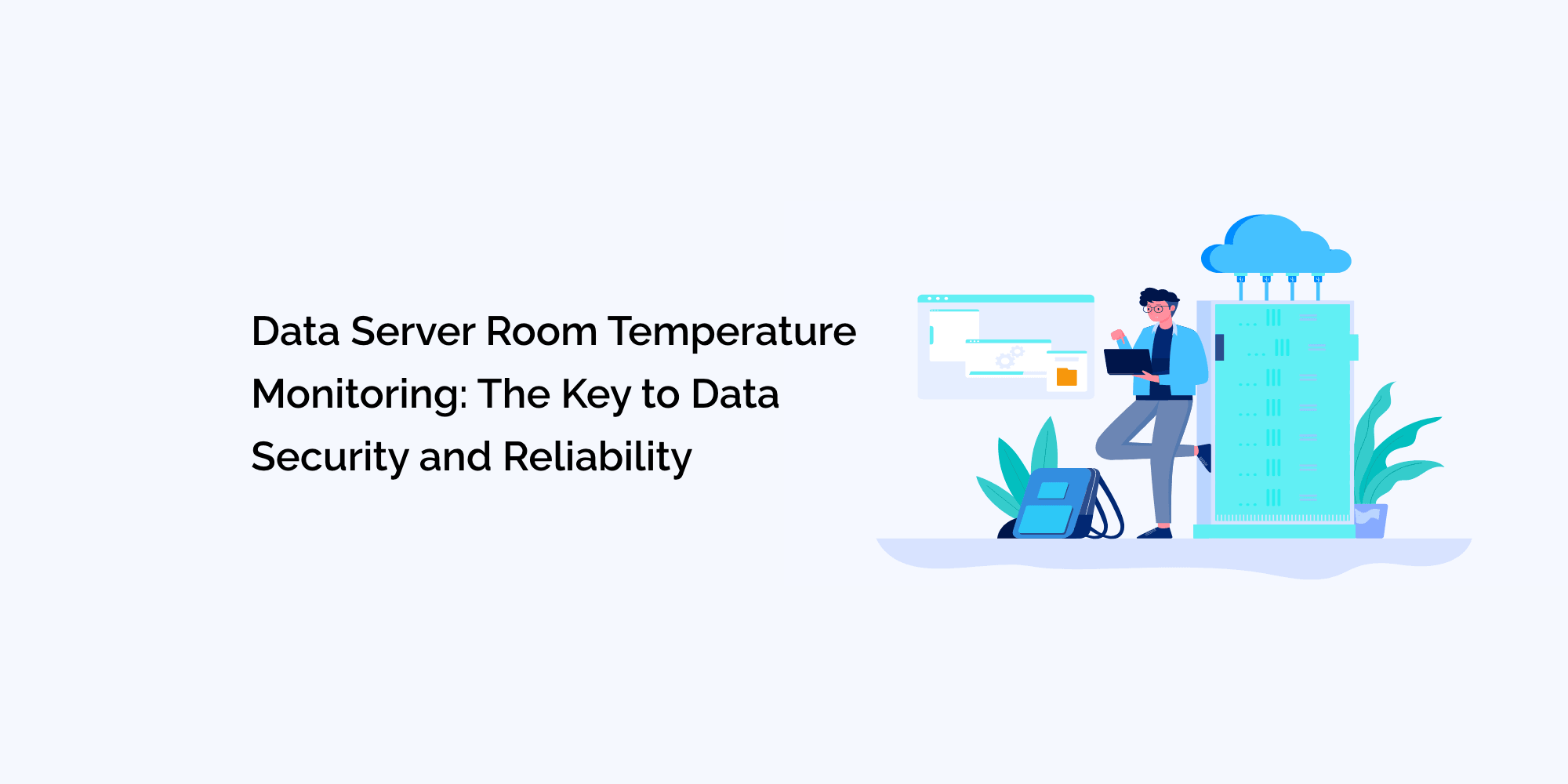Data is at the heart of every business, organization, and individual in today's digital age. Efficient and secure data storage is critical to ensuring the smooth operation of companies, safeguarding sensitive information, and maintaining overall data reliability. One of the often-overlooked aspects of data management is the temperature of data server rooms. Temperature control plays a pivotal role in the integrity and longevity of data storage equipment. In this blog, we will explore the significance of data server room temperature monitoring, exploring its impact on data security and reliability.
The Importance of Data Security:
Data security is a pressing concern for businesses across the globe. Everyone from financial institutions to healthcare organizations is vulnerable to data breaches and cyber-attacks. These breaches can result in financial losses, loss of reputation, and even legal consequences. Proper temperature monitoring in data server rooms directly influences data security in several ways:
-
Hardware Performance: Data servers are complex equipment that generates significant heat while processing and storing data. When the temperature exceeds recommended thresholds, the hardware may malfunction, leading to potential data corruption or loss. Monitoring the temperature allows IT teams to promptly identify and address cooling issues, reducing the risk of hardware failures.
-
Data Loss Prevention: Inadequate temperature control can cause data loss or corruption. High temperatures can lead to disk errors, making data inaccessible or damaged. Such occurrences can be detrimental to businesses relying on real-time data access. Monitoring server room temperature minimizes the risk of data loss due to temperature-related issues.
- Preventing Environmental Damage: In extreme cases, high temperatures can cause physical damage to data servers, such as melted components or warped circuit boards. Keeping a close eye on temperature levels can prevent costly repairs or replacements and data loss from irreparable damages.
The Role of Temperature in Data Reliability:
Data reliability refers to the consistency and accuracy of data over time. Reliable data is crucial for informed decision-making and avoiding errors. Temperature monitoring plays a critical role in data reliability by addressing the following aspects:
-
Optimal Performance: Data servers operate optimally within specific temperature ranges. Deviations from these ranges can lead to degraded performance and compromised reliability. Regular monitoring helps maintain the servers at the most favorable temperatures, ensuring consistent and reliable data processing.
-
Reducing Downtime: Overheating in data server rooms can cause unexpected server shutdowns and downtime. Downtime can result in substantial financial losses for businesses and disrupt critical operations. By tracking temperature levels, IT teams can take proactive measures to prevent overheating, minimizing the risk of server downtime.
- Extended Hardware Lifespan: Extreme temperatures can significantly shorten the lifespan of data servers. Consistently operating within the recommended temperature range can extend the hardware's life, leading to cost savings and reduced chances of data loss due to equipment failure.
Implementing Temperature Monitoring Systems:
To ensure data security and reliability, businesses must implement effective temperature monitoring systems within their data server rooms. Here are some critical steps to consider:
-
Remote Temperature Sensors: Deploying remote temperature sensors within the server room effectively monitors temperature levels. These sensors can be integrated with the data center's management software to provide real-time alerts and notifications when temperatures exceed acceptable limits.
-
Environmental Monitoring Software: Investing in specialized environmental monitoring software allows IT teams to access historical temperature data, analyze trends, and identify potential vulnerabilities. These tools enable proactive measures, such as adjusting cooling systems or addressing airflow issues, before they escalate into critical problems.
-
Redundancy and Fail-Safes: To ensure continuous monitoring, redundancy and fail-safe mechanisms should be implemented. Redundant sensors and monitoring systems can provide backup monitoring capabilities, preventing data loss even in the event of primary system failure.
- Regular Maintenance and Calibration: Temperature monitoring systems must undergo regular maintenance and calibration to ensure accuracy and effectiveness. A malfunctioning monitoring system can provide false readings, leading to inadequate responses and potential data risks.
Best Practices for Data Server Room Temperature Control:
Besides implementing monitoring systems, adhering to best practices for data server room temperature control further enhances data security and reliability. Here are some essential rules to consider:
-
HVAC Infrastructure: Invest in a robust Heating, Ventilation, and Air Conditioning (HVAC) infrastructure designed to maintain stable and optimal temperatures within the server room. Proper airflow management, cooling, and humidity control are crucial for data center health.
-
Hot Aisle/Cold Aisle Configuration: Organize server racks in a hot aisle/cold aisle configuration to optimize cooling efficiency. This layout directs cold air precisely where needed, minimizing energy wastage and ensuring an even cooling distribution.
-
Regular Inspections: Regularly inspect the data server room to identify potential issues like blocked vents, hotspots, or damaged cooling equipment. Promptly address these issues to maintain a stable temperature environment.
- Disaster Recovery and Contingency Planning: Include temperature-related incidents in disaster recovery and contingency plans. Having predefined measures for handling temperature-related emergencies can significantly reduce the impact of unexpected events.
Conclusion:
Data server room temperature monitoring is critical to maintaining data security and reliability. Businesses can safeguard against data loss, hardware failures, and costly downtime by ensuring optimal temperatures. Implementing efficient monitoring systems and adhering to best practices for temperature control allows organizations to harness the full potential of their data while mitigating risks effectively. In this data-driven era, prioritizing temperature monitoring is a crucial step toward building a robust and resilient data infrastructure.








